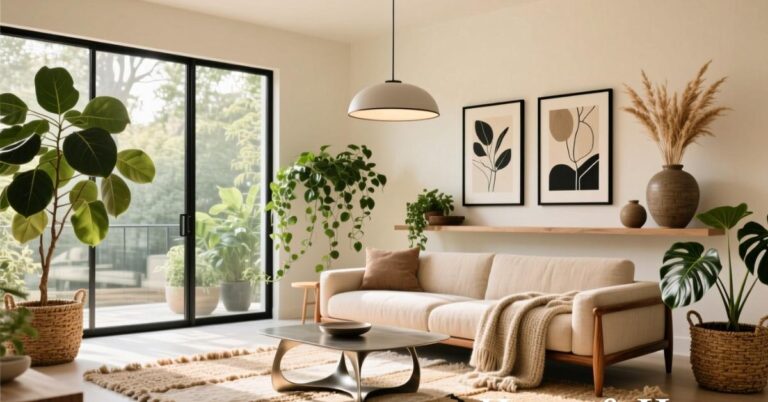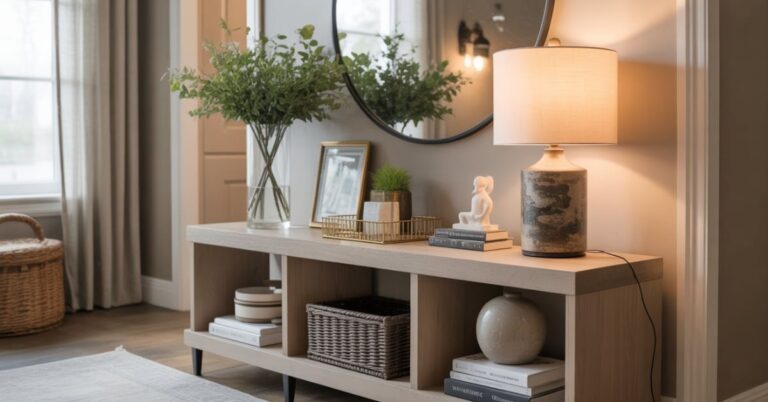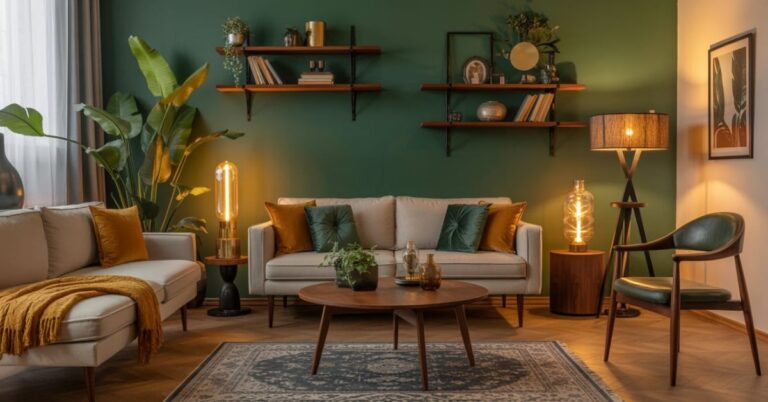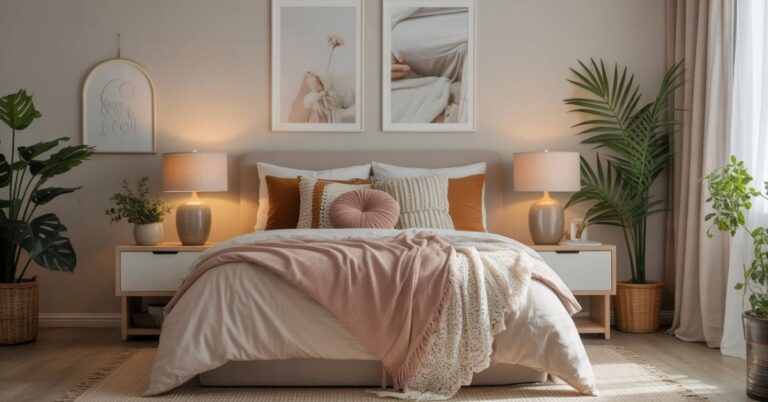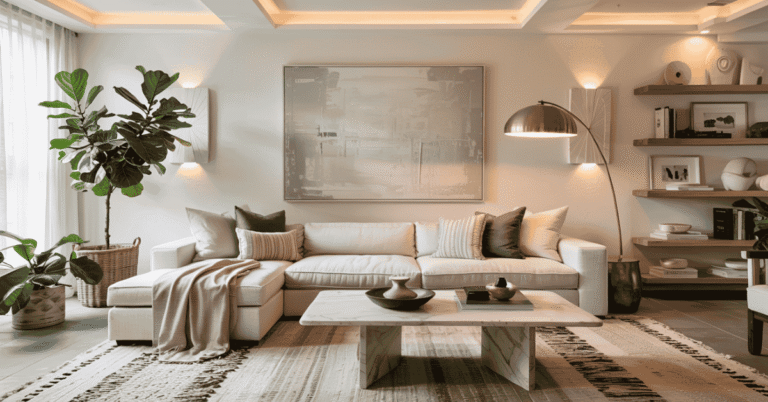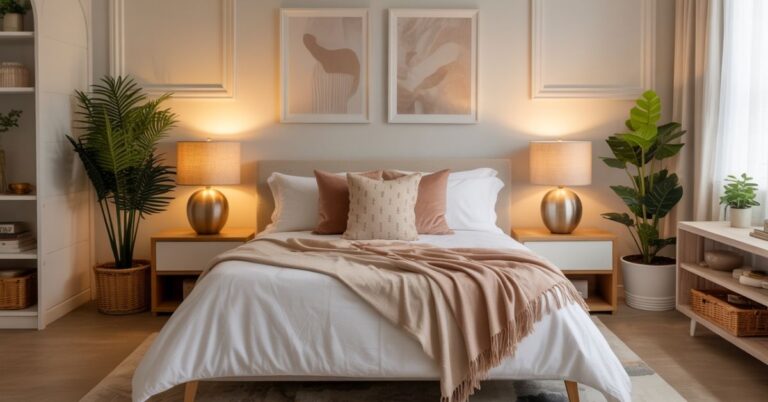Home Interior Design: Complete Guide to Creating Your Dream Space
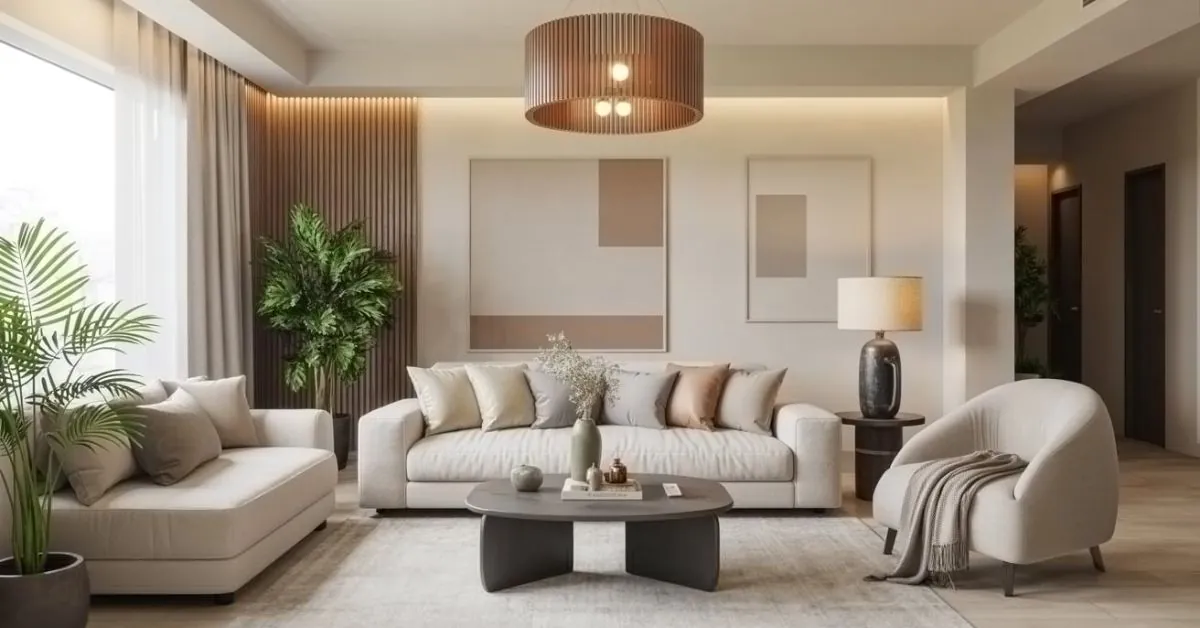
Are you staring at your living space wondering why it doesn’t feel like the magazine-worthy home you’ve always envisioned? You’re not alone. Millions of homeowners struggle with creating cohesive, functional, and beautiful home interior design that reflects their personality while maximizing their space’s potential. The frustration builds when you invest in expensive furniture pieces that somehow don’t work together, or when your rooms feel cramped despite having adequate square footage.
This disconnect between your vision and reality stems from lacking a systematic approach to interior design principles. Without understanding the fundamentals of space planning, color theory, and design elements, even the most expensive renovations can fall flat. The good news? Home interior design isn’t reserved for professionals or those with unlimited budgets. With the right knowledge and strategic planning, you can transform any space into a stunning, functional sanctuary that captures your unique style while enhancing your daily life.
What Makes Effective Home Interior Design in 2025?
Modern home interior design has evolved dramatically, embracing both timeless principles and contemporary innovations that reflect how we actually live today. Comfort, relaxation, and monochromatic spaces are in the zeitgeist, while designers are prioritizing functionality alongside aesthetic appeal. The most effective interior design approaches in 2025 focus on creating spaces that adapt to multiple functions, from remote work to entertainment and relaxation.
Sustainable interior design has become a cornerstone of modern decorating, with homeowners increasingly choosing eco-friendly materials and vintage pieces over fast furniture. This shift toward conscious consumption creates more personalized spaces while reducing environmental impact. The emphasis on biophilic design elements brings natural textures, organic shapes, and living plants indoors, creating healthier and more visually appealing environments.
Smart home integration now plays a crucial role in interior design planning. Successful designs seamlessly incorporate technology without letting devices dominate the aesthetic. Hidden charging stations, integrated sound systems, and automated lighting create convenience while maintaining visual harmony. The best home interior design solutions anticipate technological needs while preserving the human-centered feel that makes spaces truly livable.
How Do You Plan Your Home Interior Design Layout?
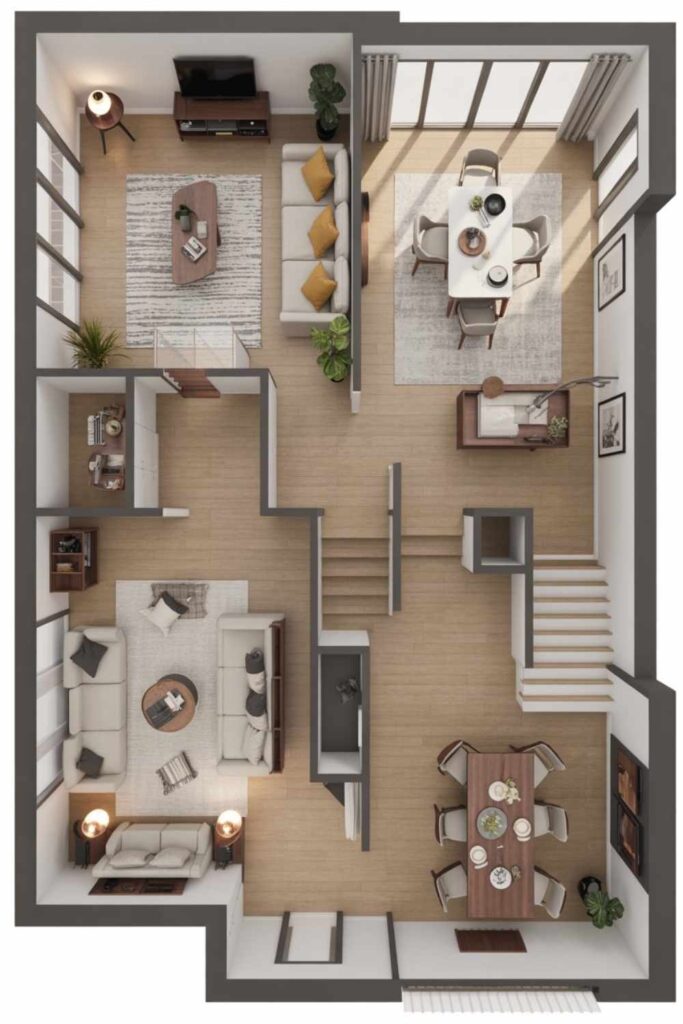
Space planning forms the foundation of successful home interior design, determining how rooms function and feel long before furniture arrives. Start by measuring your space accurately and creating scaled floor plans that show architectural features like windows, doors, and built-ins. Understanding your room’s proportions helps you select appropriately sized furniture and avoid common mistakes like choosing pieces that overwhelm or underwhelm the space.
Traffic flow analysis ensures your interior design layout supports daily activities without creating bottlenecks or awkward movements. Map out primary pathways between rooms and secondary paths within each space. Leave at least 36 inches for main walkways and 24 inches between furniture pieces. Consider how different family members use the space throughout the day, from morning routines to evening entertainment.
Zoning strategies maximize functionality in open-concept homes and multi-purpose rooms. Use furniture placement, area rugs, lighting, and color changes to define distinct areas without physical barriers. A well-planned living room interior design might include a conversation zone around the fireplace, a reading nook by the window, and a media area facing the television. Each zone should feel connected to the overall space while serving its specific purpose effectively.
Essential Space Planning Tools
Digital tools have revolutionized home interior design planning, making professional-quality layouts accessible to homeowners. Free applications like SketchUp and IKEA’s Home Planner allow you to experiment with different arrangements before making purchasing decisions. These tools help visualize how natural light changes throughout the day and how seasonal decorations will fit into your overall scheme.
Mood boards and design vision boards translate inspiration into actionable plans. Collect images, fabric samples, paint chips, and material samples that capture your desired aesthetic. This process reveals patterns in your preferences and helps maintain consistency across different rooms. Digital platforms like Pinterest and Canva offer templates specifically designed for interior design project planning.
Which Color Schemes Work Best for Home Interior Design?
Color psychology in interior design significantly impacts mood, perceived space size, and overall comfort levels. Color trends are moving more into off-whites, creams, beiges, tans and browns, reflecting the broader shift toward warm interior design palettes that create welcoming, cozy atmospheres. Understanding how colors interact with natural and artificial light helps you choose schemes that look consistent throughout the day.
Neutral color schemes provide timeless flexibility while allowing accent colors to shine. Modern neutrals extend beyond beige and gray to include mushroom, sage, warm whites, and soft blues. These versatile interior design colors work with various decorating styles and make it easier to change accessories seasonally. Layer different shades of the same color family to create depth and visual interest without overwhelming the space.
Bold accent colors inject personality into neutral home interior design schemes. The 60-30-10 rule provides a foolproof formula: use your main color for 60% of the space (walls and large furniture), a secondary color for 30% (upholstery and window treatments), and a bold accent color for 10% (artwork, pillows, and accessories). This approach prevents color overwhelm while ensuring visual balance.
Trending Color Combinations for 2025
Bold, saturated colors are making a comeback in 2025, offering opportunities for dramatic statement interior design. Color-drenched rooms use varying shades of a single hue to create sophisticated, immersive environments. Forest green walls with sage accents and olive furnishings create a nature-inspired retreat, while various blues from navy to powder create calming, spa-like atmospheres.
Earthy interior design palettes reflect the growing connection to natural elements. Terracotta, rust, ochre, and clay colors pair beautifully with natural wood tones and organic textures. These warm color schemes feel grounding and work particularly well in dining rooms, bedrooms, and living spaces where comfort is paramount.
What Are the Essential Furniture Selection Principles?
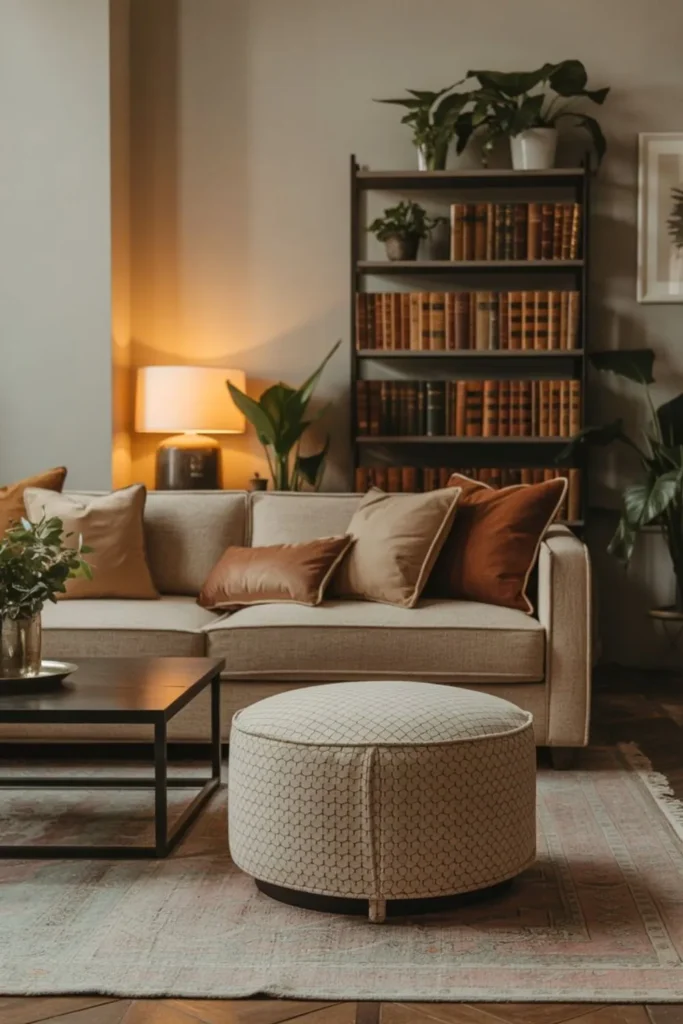
Furniture selection for home interior design requires balancing aesthetics, functionality, and budget considerations. Start with investment pieces that see daily use and will remain stylish for years. Quality sofas, dining tables, and beds form the backbone of your home furniture design, so prioritize craftsmanship and comfort over trendy details that may quickly feel dated.
Scale and proportion determine whether furniture feels appropriate in your space. A common mistake is choosing pieces that are too small for the room, making the space feel unfinished and disconnected. Measure your room’s dimensions and use painter’s tape to mark furniture footprints on the floor before purchasing. This technique prevents costly mistakes and ensures proper spacing for comfortable movement.
Multi-functional furniture maximizes space efficiency while maintaining clean interior design lines. Ottoman storage, expandable dining tables, and modular seating adapt to changing needs without requiring complete room makeovers. These space-saving interior design solutions are particularly valuable in smaller homes where every piece must work harder.
Building a Cohesive Furniture Collection
Furniture style mixing creates more interesting and personalized home interior design than matching sets. Combine different periods and styles using consistent elements like color, finish, or scale. A mid-century modern sofa can work beautifully with antique side tables if they share similar wood tones or proportions. This approach creates collected-over-time charm rather than catalog-perfect sterility.
Quality versus quantity decisions impact both your budget and long-term satisfaction. Invest in pieces with solid wood construction, quality hardware, and timeless silhouettes. Buy less expensive accessories and accent pieces that can be easily updated as your tastes evolve. This strategy creates a strong foundation for your interior design investment while maintaining flexibility for future changes.
Read More About : Home Decorating Ideas Living Room Stylish & Cozy Inspiration 2025
How Do You Choose Interior Design Lighting Solutions?
Interior design lighting serves both functional and aesthetic purposes, dramatically impacting how colors appear and how spaces feel throughout the day. “Statement fixtures and layered lighting are in for 2025,” says designer Kara Childress. “Architectural lighting in the form of sconces, chandeliers, and sculptural floor lamps will replace purely functional lighting”. This trend toward decorative lighting elements means light fixtures become focal points rather than afterthoughts.
Layered lighting design combines ambient, task, and accent lighting to create flexible, functional illumination. Ambient lighting provides overall room illumination through ceiling fixtures, recessed lights, or large floor lamps. Task lighting focuses on specific activities like reading, cooking, or working, while accent lighting highlights artwork, architectural features, or creates mood. Each layer should be controllable independently for maximum versatility.
Natural light optimization reduces energy costs while improving your home’s overall ambiance. Strategic mirror placement reflects light deeper into rooms, while light-colored walls and furnishings amplify brightness. Consider the direction your windows face when planning your lighting interior design. South-facing rooms receive consistent light throughout the day, while north-facing spaces may need more artificial lighting to feel welcoming.
Modern Lighting Technology Integration
Smart lighting systems offer unprecedented control over your home’s interior design atmosphere. Programmable LED fixtures can change color temperature from warm morning light to cool midday brightness, supporting natural circadian rhythms while adapting to different activities. Voice control and smartphone apps make it easy to create lighting scenes for entertaining, relaxing, or working.
Energy-efficient lighting design reduces environmental impact while cutting utility costs. LED fixtures last significantly longer than traditional bulbs and produce less heat, making them safer for delicate fabrics and artwork. Modern LED technology offers excellent color rendering, ensuring your interior design color schemes appear as intended under artificial light.
What Interior Design Styles Should You Consider?
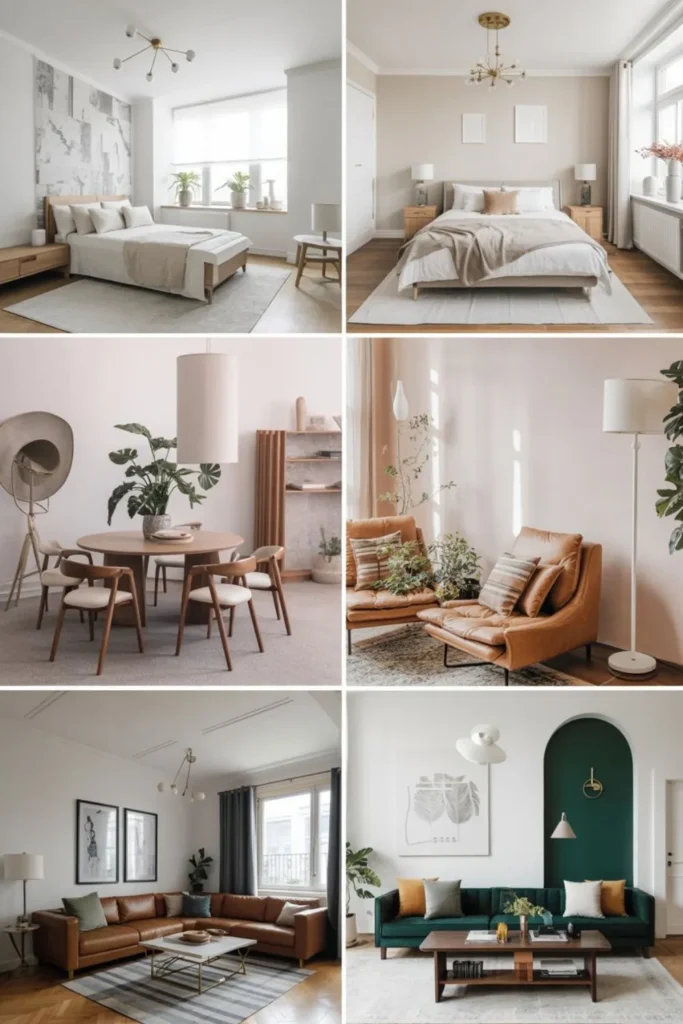
Contemporary interior design styles reflect current lifestyles and technological advances while maintaining timeless appeal. Modern minimalist design emphasizes clean lines, uncluttered spaces, and high-quality materials, perfect for homeowners who appreciate simplicity and functionality. This style works particularly well in urban settings and smaller spaces where every element must earn its place.
Transitional interior design bridges traditional and contemporary elements, creating comfortable, approachable spaces that feel both current and timeless. This versatile style accommodates family heirlooms alongside modern conveniences, making it ideal for multi-generational households. Neutral color palettes and classic furniture silhouettes provide flexibility for changing accessories and seasonal updates.
Scandinavian interior design principles emphasize functionality, natural materials, and cozy comfort known as hygge. Light wood tones, white walls, and minimal ornamentation create bright, airy spaces that feel welcoming rather than stark. This style particularly appeals to homeowners seeking sustainable interior design solutions and stress-reducing environments.
Emerging Style Trends for 2025
Maximalist interior design offers a bold alternative to minimalism, celebrating pattern, color, and collected objects. “Pattern-drenching interiors” are becoming popular, where multiple patterns work together through shared color schemes or scale relationships. This approach requires confident editing to avoid visual chaos while expressing personal style dramatically.
Biophilic interior design incorporates natural elements beyond houseplants to create healthier, more connected living spaces. Natural stone, reclaimed wood, water features, and organic shapes bring outdoor serenity indoors. This style supports both physical and mental wellbeing while creating Instagram-worthy spaces that feel genuinely livable.
Read More : 12 Timeless Home Decor Styles to Inspire Your Space
How Do You Incorporate Current Interior Design Trends?
2025 interior design trends emphasize comfort, sustainability, and personal expression while moving away from cookie-cutter perfection. Warm tones, warm woods, warm and welcoming spaces homeowners are craving warmth, reflecting a desire for homes that provide emotional comfort alongside physical shelter. Incorporating trends selectively prevents your space from looking dated in a few years.
Material drenching creates sophisticated, immersive environments by using one material throughout a space in various applications. The term, first coined by Los Angeles–based designer Jake Arnold, describes decorating an entire room with one material, whether wood, stone, plaster, fabric, or something else. This technique works particularly well in powder rooms, home offices, or accent walls where dramatic impact is desired.
Vintage and antique integration adds character and sustainability to modern home interior design. Mix inherited pieces with contemporary finds to create spaces that tell personal stories while reducing environmental impact. The key is editing carefully to maintain visual coherence while celebrating meaningful objects that might not match current trends.
Balancing Trends with Timeless Design
Trend-resistant interior design focuses on classic proportions, quality materials, and personal preferences over magazine perfection. Invest in neutral backgrounds and well-made furniture, then incorporate trends through easily changeable elements like pillows, artwork, and accessories. This approach allows you to refresh your space without costly renovations every few years.
Personal style development creates more satisfying home interior design than following trends blindly. Identify elements that consistently appeal to you across different styles and time periods. These might include specific colors, textures, or furniture silhouettes that feel authentically you. Building on these preferences creates spaces that remain relevant regardless of changing fashion.
What Are Common Interior Design Mistakes to Avoid?
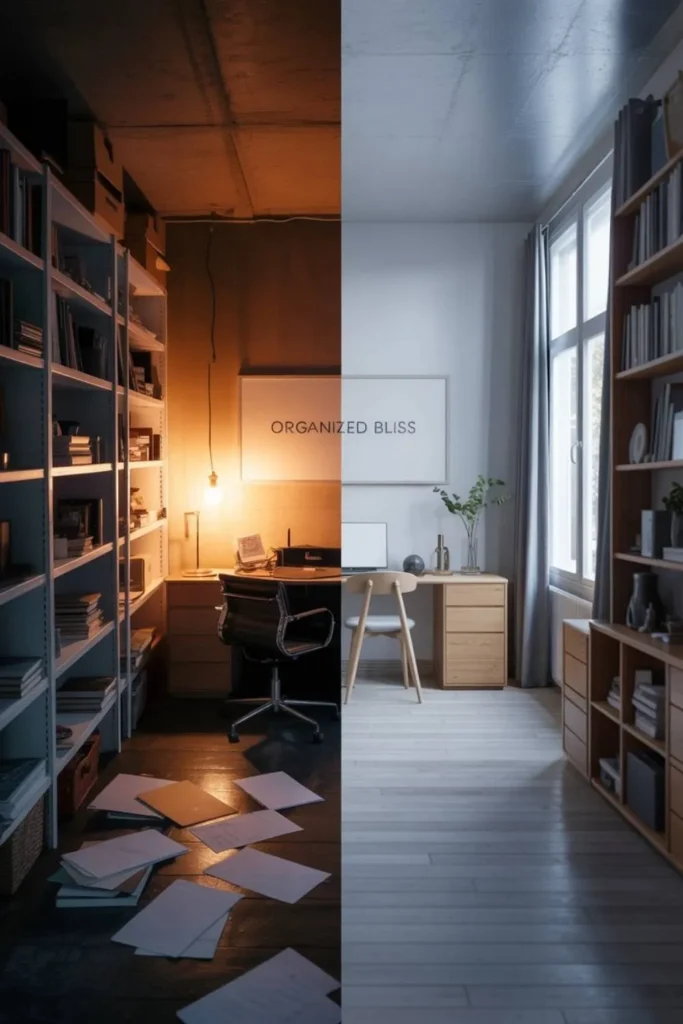
Scale and proportion errors rank among the most common interior design mistakes that undermine otherwise well-planned spaces. Choosing furniture that’s too small makes rooms feel disjointed and unfinished, while oversized pieces can overwhelm and restrict movement. Always measure carefully and use floor tape to visualize furniture placement before purchasing major pieces.
Poor lighting planning creates functional problems and aesthetic disappointments that expensive furniture can’t fix. Relying solely on overhead fixtures produces harsh shadows and unflattering light that makes even beautiful spaces feel uncomfortable. Plan for multiple light sources at different heights to create warm, inviting atmospheres suitable for various activities.
Color matching obsession produces sterile, catalog-perfect spaces that lack personality and visual interest. Perfect matches can feel flat and boring, while carefully chosen coordinating colors create depth and sophistication. Aim for colors that relate to each other rather than exact matches, using varying shades and textures to add complexity.
Budget and Timeline Management Issues
Unrealistic budget expectations lead to compromised results and project delays that frustrate homeowners. Quality home interior design takes time and investment, but strategic planning maximizes impact while controlling costs. Prioritize rooms used most frequently and focus on one space at a time rather than attempting whole-house renovations simultaneously.
Impatience with the design process often results in hasty decisions that require costly corrections later. Living with spaces temporarily while planning thoroughly produces better long-term results than rushing to fill rooms with whatever’s available. Consider your interior design project a marathon rather than a sprint, allowing time for thoughtful selections and quality installation.
Read More About : 15 Stunning Home Decor Ideas Bedroom Lovers Need to Try
How Much Should You Budget for Home Interior Design?
Interior design budgeting varies dramatically based on scope, quality preferences, and regional costs. A realistic budget allocates 10-15% of your home’s value for complete interior design, though room-by-room approaches allow for more flexible spending. Prioritize rooms that impact daily life most significantly, typically living areas, kitchens, and master bedrooms.
Cost-effective interior design strategies maximize impact while controlling expenses. Focus major investments on pieces you’ll use daily and that are difficult to change later, such as built-in storage, quality flooring, and major appliances. Save money on easily changeable elements like paint colors, window treatments, and accessories that can be updated as budgets allow.
Professional versus DIY decisions depend on project complexity and your skill level. Complex projects involving electrical work, plumbing, or structural changes require professional expertise for safety and code compliance. Simple updates like painting, decorative accessories, and furniture arrangement often work well as DIY projects that save money while building confidence.
Investment Prioritization Strategies
Long-term value considerations help justify higher upfront costs for quality pieces that last decades rather than years. Solid wood furniture, quality mattresses, and well-made window treatments may cost more initially but provide better value over time than multiple replacements of cheaper alternatives.
Phased renovation planning allows for higher quality selections by spreading costs over time. Complete one room fully before starting the next, ensuring each space reaches its full potential rather than leaving multiple areas partially finished. This approach also allows you to live with your choices and learn what works best before making similar decisions in other rooms.
What Role Do Accessories Play in Interior Design?
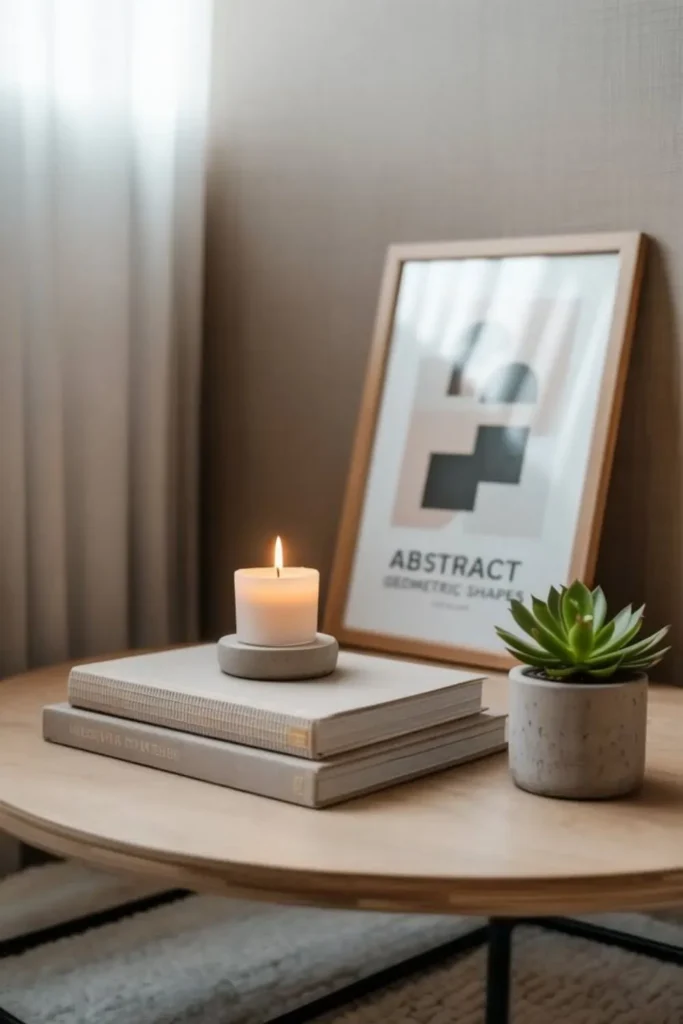
Interior design accessories transform well-planned rooms from good to exceptional by adding personality, color, and visual interest. These finishing touches include artwork, pillows, throws, decorative objects, books, and plants that make spaces feel complete and lived-in. The key is editing carefully to avoid cluttered, overwhelming environments that distract from your room’s main features.
Seasonal decorating keeps spaces feeling fresh without major investments. Swap pillow covers, throws, and decorative objects to reflect changing seasons while maintaining your core design scheme. Spring might bring lighter fabrics and fresh flowers, while fall introduces richer textures and warm colors that create cozy atmospheres during shorter days.
Artwork and wall decor provide opportunities to express personal interests while adding visual weight and color to your interior design scheme. Mix different sizes, mediums, and styles while maintaining consistent framing or matting for cohesion. Gallery walls work well for collections, while large statement pieces anchor seating areas and create focal points.
Creating Meaningful Displays
Personal collections tell your story while adding character to home interior design. Group similar objects in odd numbers and varying heights to create visual interest. Mix textures, colors, and scales while maintaining some unifying element like material, color, or theme. Books, family photos, travel souvenirs, and hobby-related items work particularly well when thoughtfully arranged.
Styling techniques make the difference between cluttered surfaces and curated displays. Use the rule of thirds to create balanced groupings, and leave some negative space to prevent overwhelming busy areas. Layer objects at different heights and depths, and include one or two unexpected elements that add personality without disrupting the overall scheme.
Read More : 15 Creative Home Decoration Ideas to Refresh Your Space
FAQ’s
What is the first step in planning home interior design?
Start with a thorough assessment of how you actually use each space, noting traffic patterns, storage needs, and functionality problems. Measure rooms accurately and identify architectural features that must be accommodated. This foundation ensures your design decisions support your lifestyle rather than just looking pretty.
How do I choose an interior design style that suits my home?
Consider your home’s architectural style, your lifestyle needs, and personal preferences rather than following trends. Study spaces that appeal to you and identify common elements like colors, textures, or furniture styles. Your chosen style should feel authentic and sustainable for your family’s long-term needs.
What’s the biggest mistake people make in home interior design?
Rushing the process and making decisions based on immediate availability rather than careful planning. Taking time to measure, plan, and consider how pieces work together prevents costly mistakes and creates more cohesive, satisfying results that last for years.
How can I make a small room look larger through interior design?
Use light colors on walls and major furniture pieces, maximize natural light with minimal window treatments, and choose furniture with legs to create visual flow. Mirrors reflect light and views, while avoiding clutter keeps sightlines clear and spaces feeling open.
Should I hire a professional interior designer or do it myself?
Consider professional help for complex projects involving structural changes, or when you feel overwhelmed by choices. DIY works well for straightforward updates like painting, furniture arrangement, and decorative accessories. Many successful projects combine professional consultation with DIY implementation.
Conclusion
Home interior design success comes from understanding that beautiful, functional spaces result from thoughtful planning rather than expensive purchases or perfect trend-following. The most satisfying interiors reflect their owners’ personalities while supporting daily activities through careful attention to traffic flow, lighting, and scale.
Whether you choose minimalist modern schemes or maximalist expressions, consistency in your approach creates cohesion that makes spaces feel intentionally designed rather than accidentally assembled.
The investment you make in proper interior design planning pays dividends in daily comfort and long-term satisfaction. Take time to understand your space’s possibilities and limitations, then build your design gradually with quality pieces that serve multiple functions.
Remember that the best home interior design evolves over time, growing and changing as your family’s needs shift. Start with a solid foundation of good lighting, appropriate scale, and colors you genuinely love, then add personality through accessories and artwork that tell your unique story.

